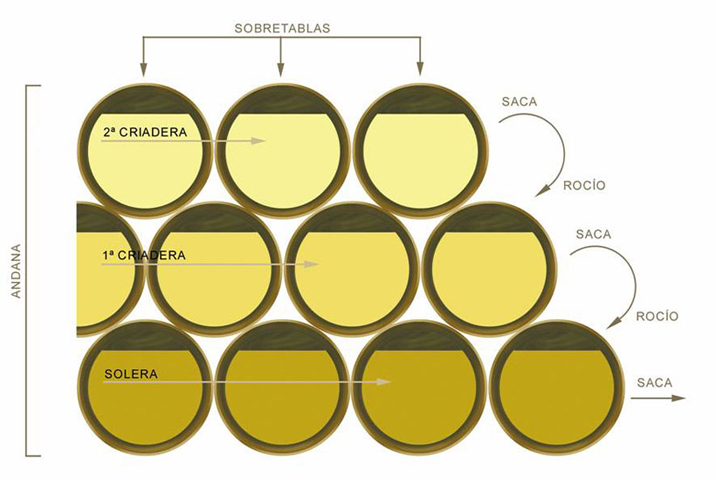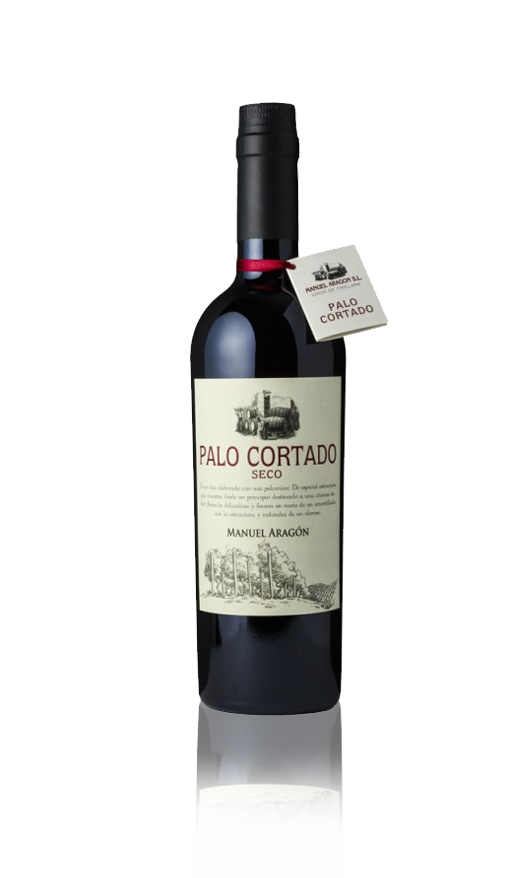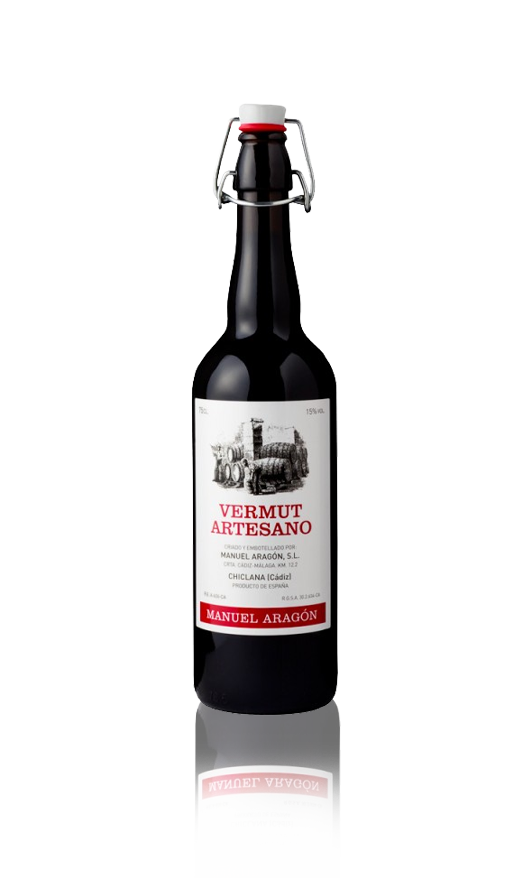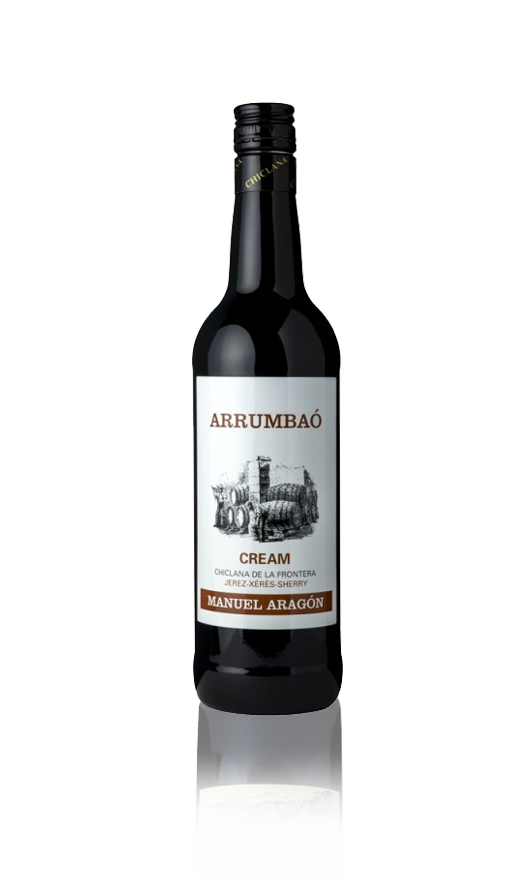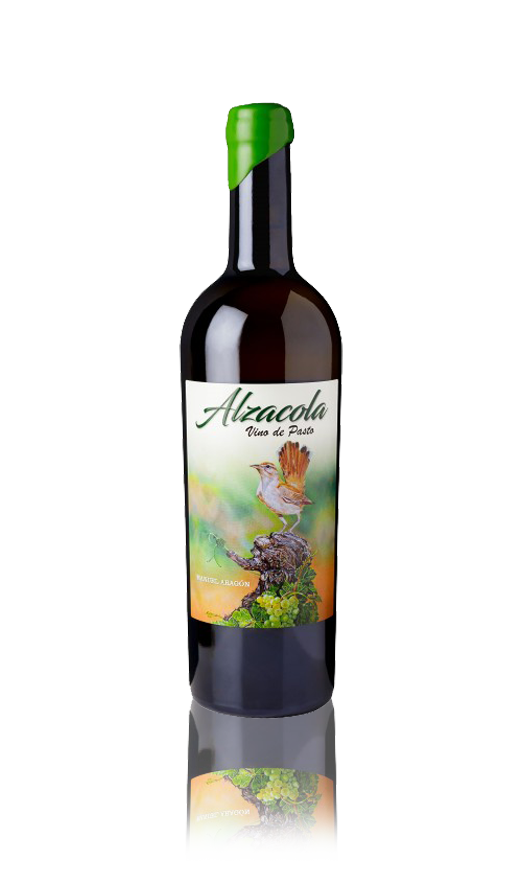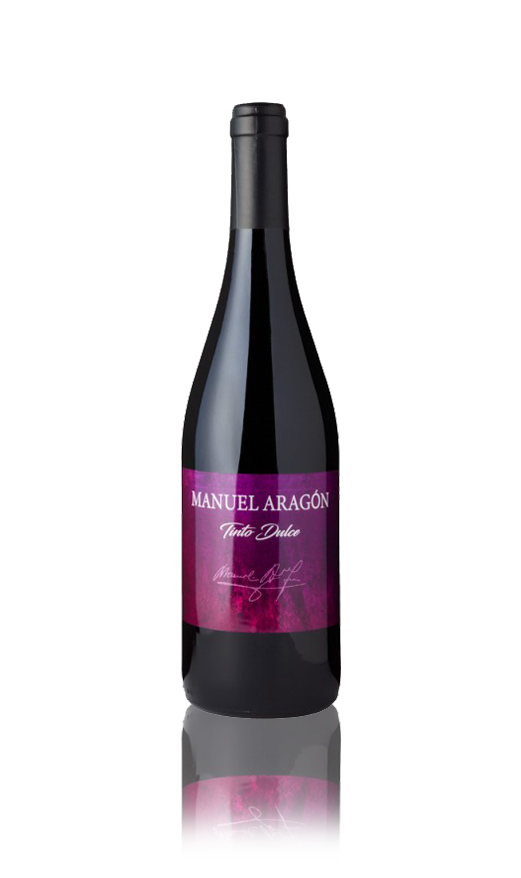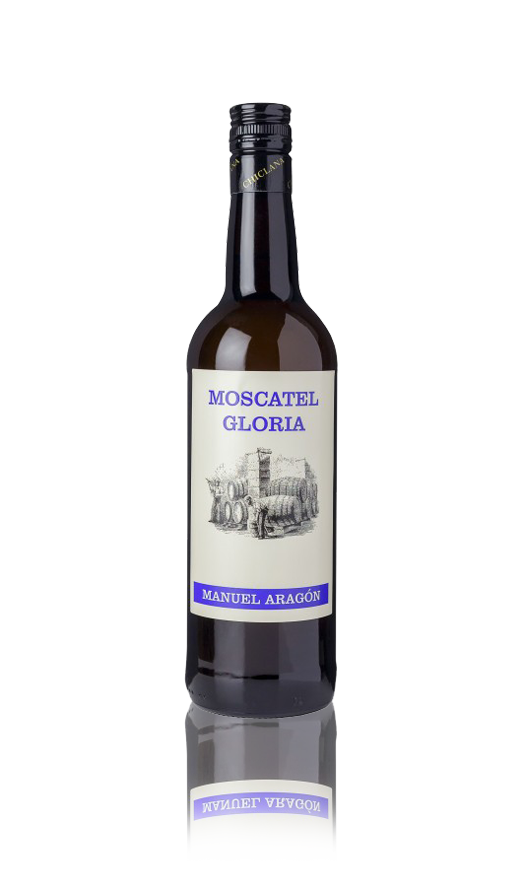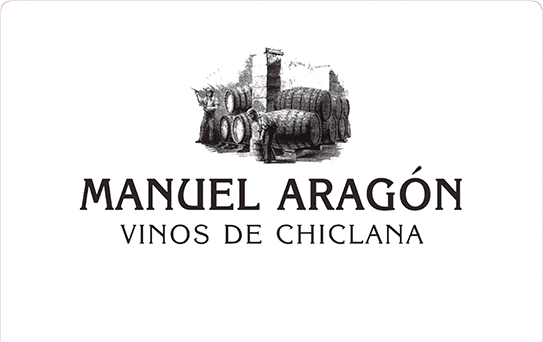Our wines
Chiclana de la Frontera is included in the D.O. Jerez-Xérès-Sherry. A privileged region of the province of Cádiz, between the beautiful Cadiz mountains and the Atlantic coast that permeates the entire area with its influence and contributes to the unique characteristics of its wines. The Chiclana vineyards are the southernmost in the Marco de Jerez.
The Manuel Aragón Winery produces wines included in the D.O. Jerez-Xérès-Sherry and Vinos de la Tierra de Cádiz, in both cases with the seal of excellence that gives both the quality of the vineyards and the combination of tradition and good work maintained for more than one hundred years within the Aragón family .
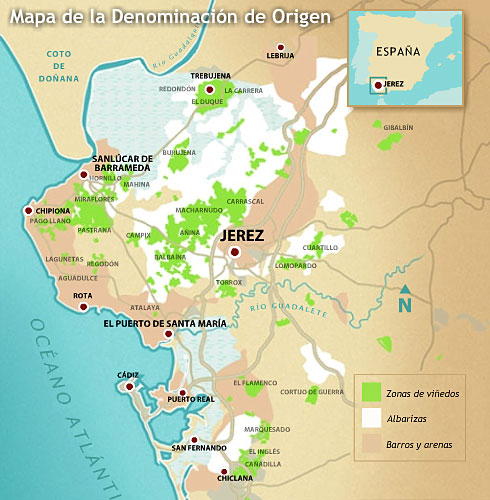
Climate and soil
In addition to the great importance of the techniques and traditions of viticulture practiced in a given area, the climate and the soil are the natural factors that influence the characteristics of the wines.
The climate of Marco de Jerez is warm. Summers are dry and with high temperatures, which causes high evapotranspiration, although Chiclana's proximity to the Atlantic Ocean moistens the vines, especially at night, due to the effect of dew, providing that salinity that identifies our wines. Spring and summer, during which the life cycle of the vineyard takes place, are subject to the dominant winds from the West and East. The first is cool and humid (it reaches 95% humidity) while the second is hot and dry (with humidity levels around 30%). The average annual temperature is 17.3ºC, with very mild winters in which it rarely freezes. The area enjoys a very high annual average of effective sunshine hours, between 3,000 and 3,200. The rainfall is relatively high, sufficient for the good development of the vines, since it is also complemented by the important nocturnal dews provided by the neighboring Atlantic Ocean.
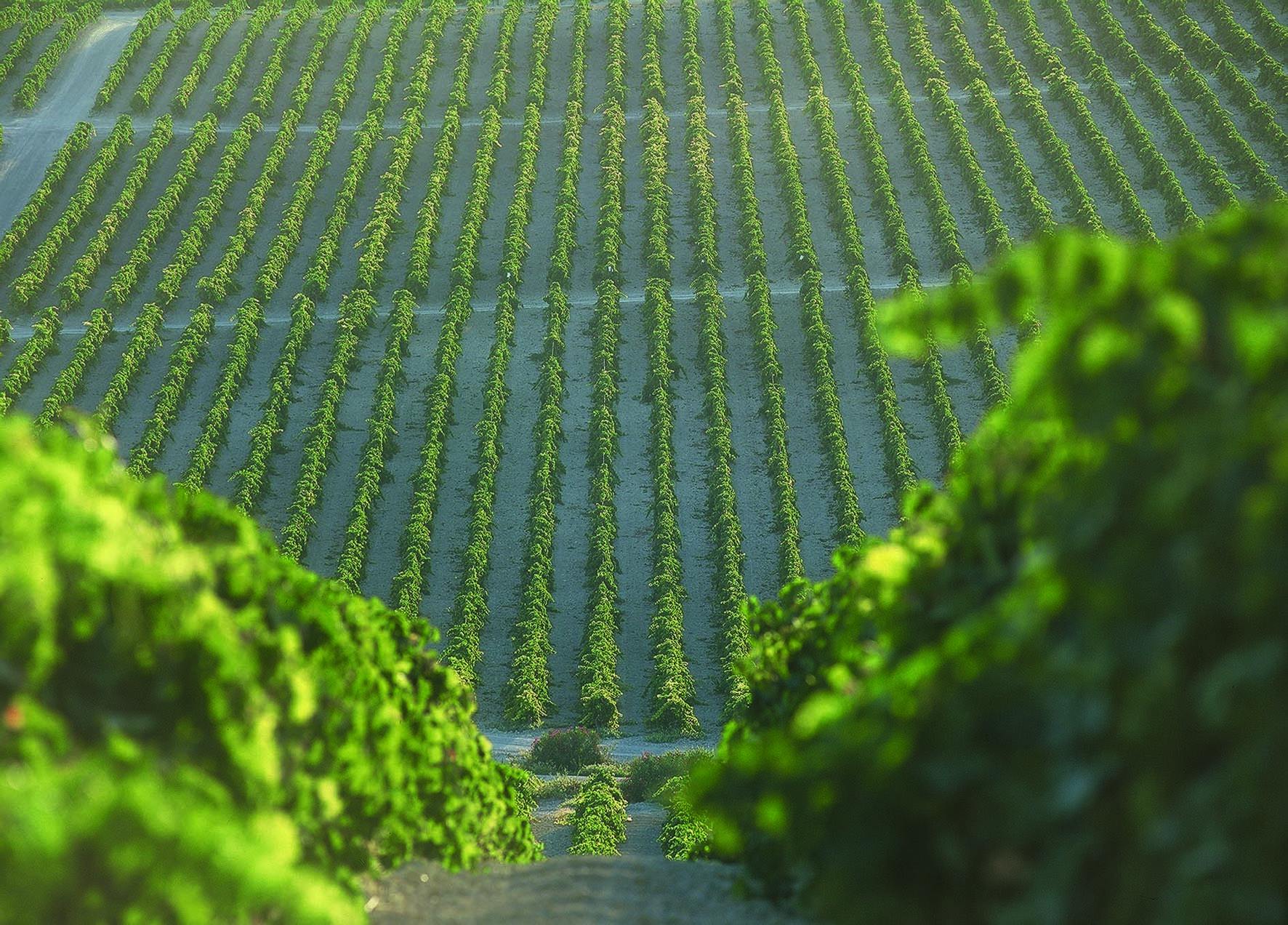
A good part of the soils in the area are covered with a limestone soil that in the dry months is dazzlingly white: Albariza, rich in calcium carbonate, clay and silica, this coming from the remains of marine animals present in the sea that occupied this area during the Oligocene. The most important characteristics of this soil are its high moisture retention capacity, storing the rain that falls in winter to nourish the vine in the dry months, in addition to the fact that they are poor in organic content and that, due to their white color, they are capable of reflecting a much of the solar radiation. In rainy periods the Albariza opens like a sponge, absorbing a large amount of water. Subsequently, with the arrival of heat, the surface layers of the soil become compacted, thus preventing the evaporation produced by the high luminosity of the area. Albariza is easy to till and allows excellent distribution of the roots.
Traditionally, winegrowers have divided the production area into plots, considering each small area of vineyards as such, with homogeneous soil and mesoclimates, and delimited by topographical features. Our vineyards are located in Pago Campano, Cañadillas and Marquesado.
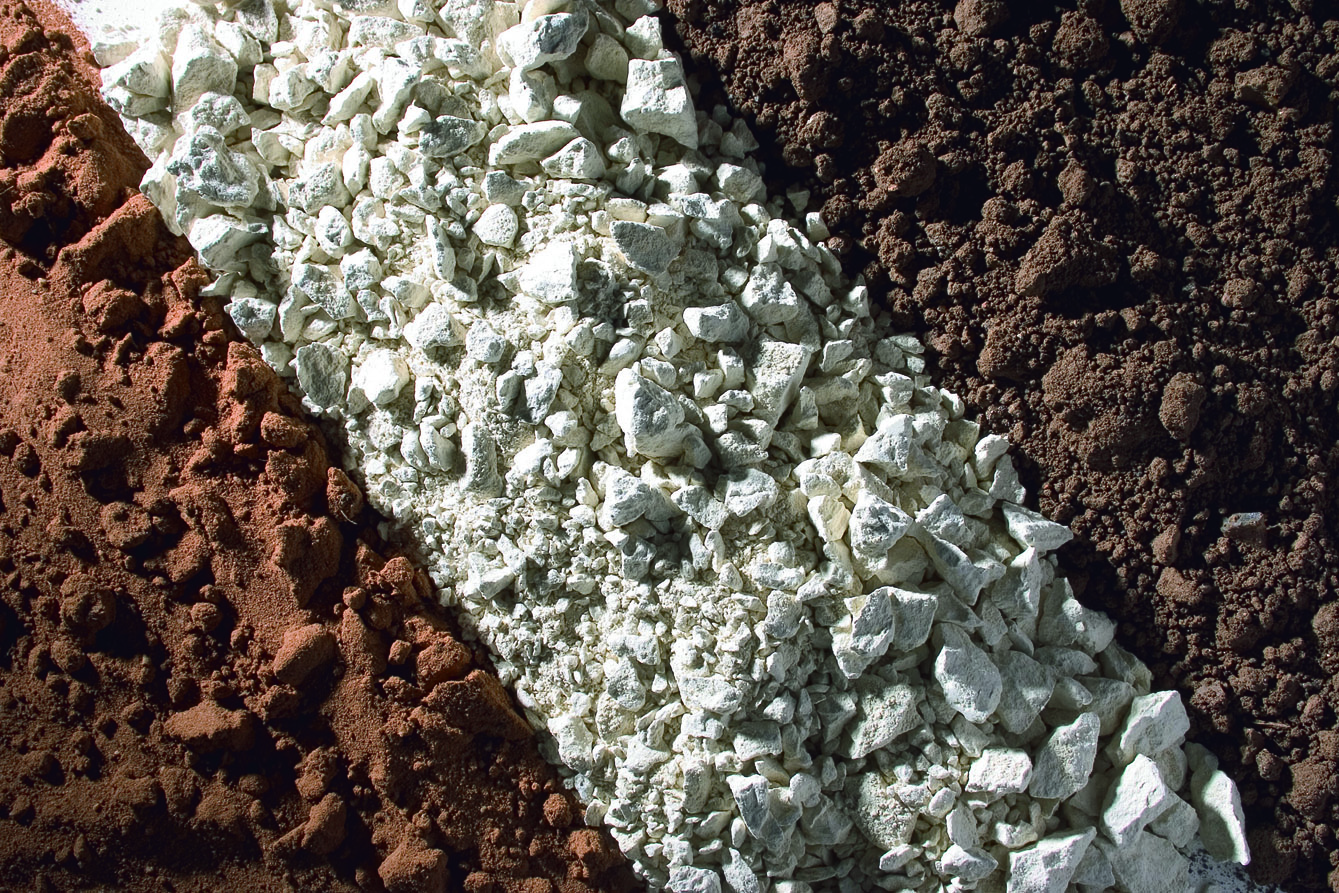
Viticulture
Vine cultivation is a complex process that includes multiple processes that definitely influence the final product: wine. Preparing the land, planting, grafting and caring for the plant involves careful work by the winegrower to achieve the highest quality of the future wine. During the winter rest of the vines, pruning is carried out, the objective of which is to shape the plant and regulate its growth to obtain the fruit with the desired quantity and characteristics.
The harvest, traditionally carried out at the beginning of September, does not have an exact date since it depends on variable climatic factors, as well as the grape variety and the type of wine that is desired. Choosing the optimal time for harvest requires the knowledge and experience of the winegrower and winemaker. The cutting of the clusters in the vineyards of the Manuel Aragón Winery is carried out exclusively by hand. The cut clusters must arrive undamaged at the winery, where they are destemmed, in which the woody part of the cluster is separated, and the grapes are crushed and pressed, which produces the must.
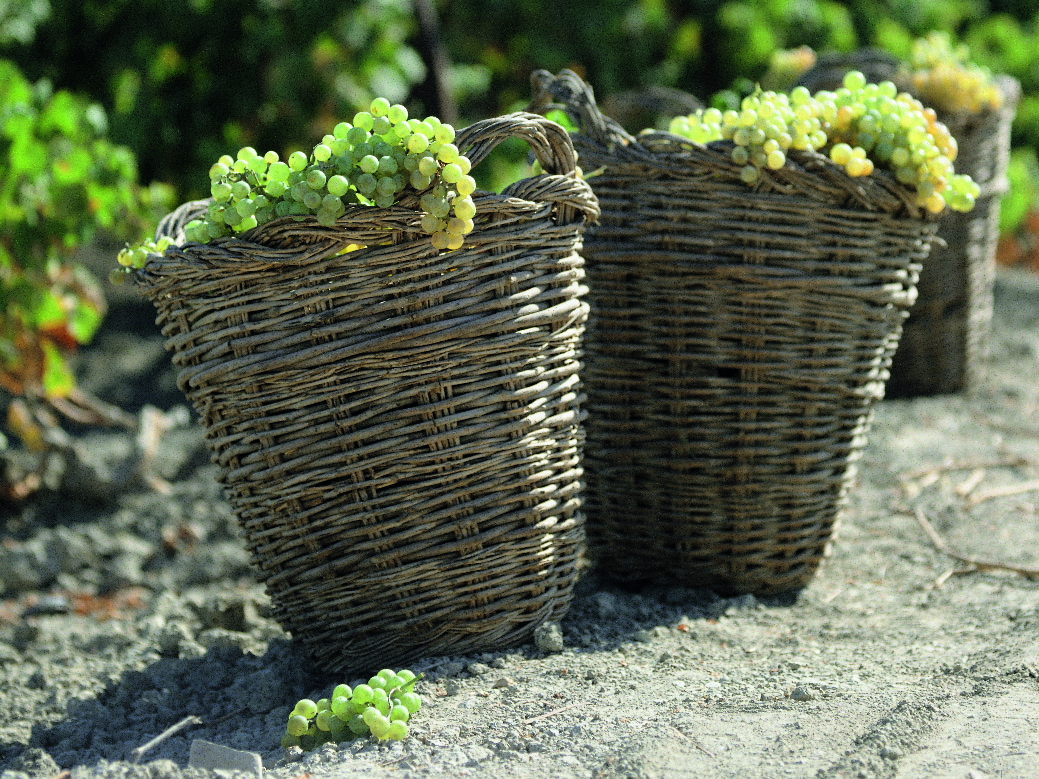
Variety of grapes
The wines of the Jerez-Xérèz-Sherry Denomination of Origin come from grapes of the Palomino, Pedro Ximénez and Moscatel varieties, the only ones authorized by the Regulatory Council of the Denomination of Origin.
Other wines produced by Bodega Manuel Aragón and classified as Vinos de la Tierra de Cádiz, also use other grape varieties, such as Sauvignon Blanc, Tempranillo, or Syrah.
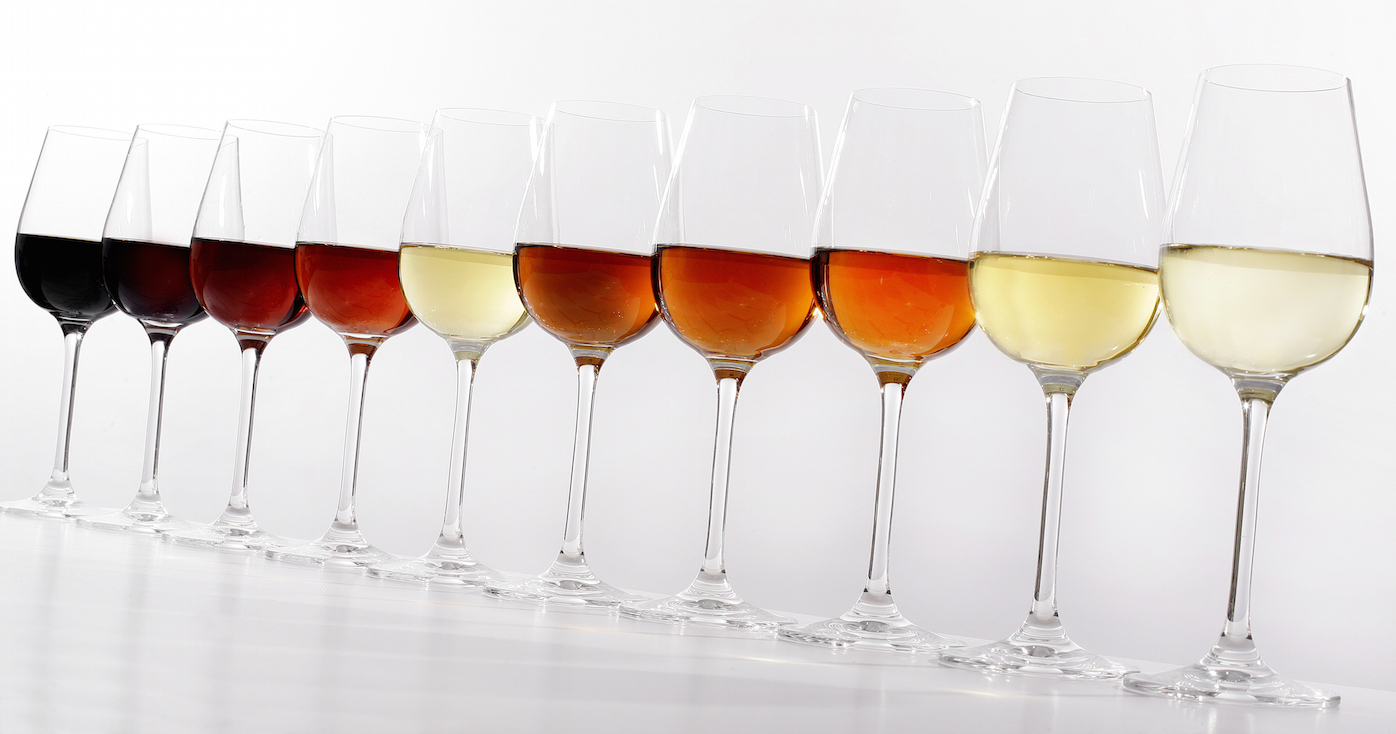
Heading or fortification. Biological and oxidative aging
The must undergoes a natural fermentation process in stainless steel tanks at a controlled temperature, where the sugars are transformed into ethyl alcohol by the action of natural yeasts, giving rise to the base wine.
One of the characteristics of Chiclana wine is that it is a fortified wine or, in winery terminology, "headed". The base wine is racked into American oak barrels where a certain amount of wine alcohol is added, in order to slightly increase its final alcohol content. This practice has its origins in the need, centuries ago, to stabilize wines that were destined for consumption in very distant markets and that, therefore, had to be "protected" to be able to carry out long journeys. Today the practice is maintained for oenological reasons.
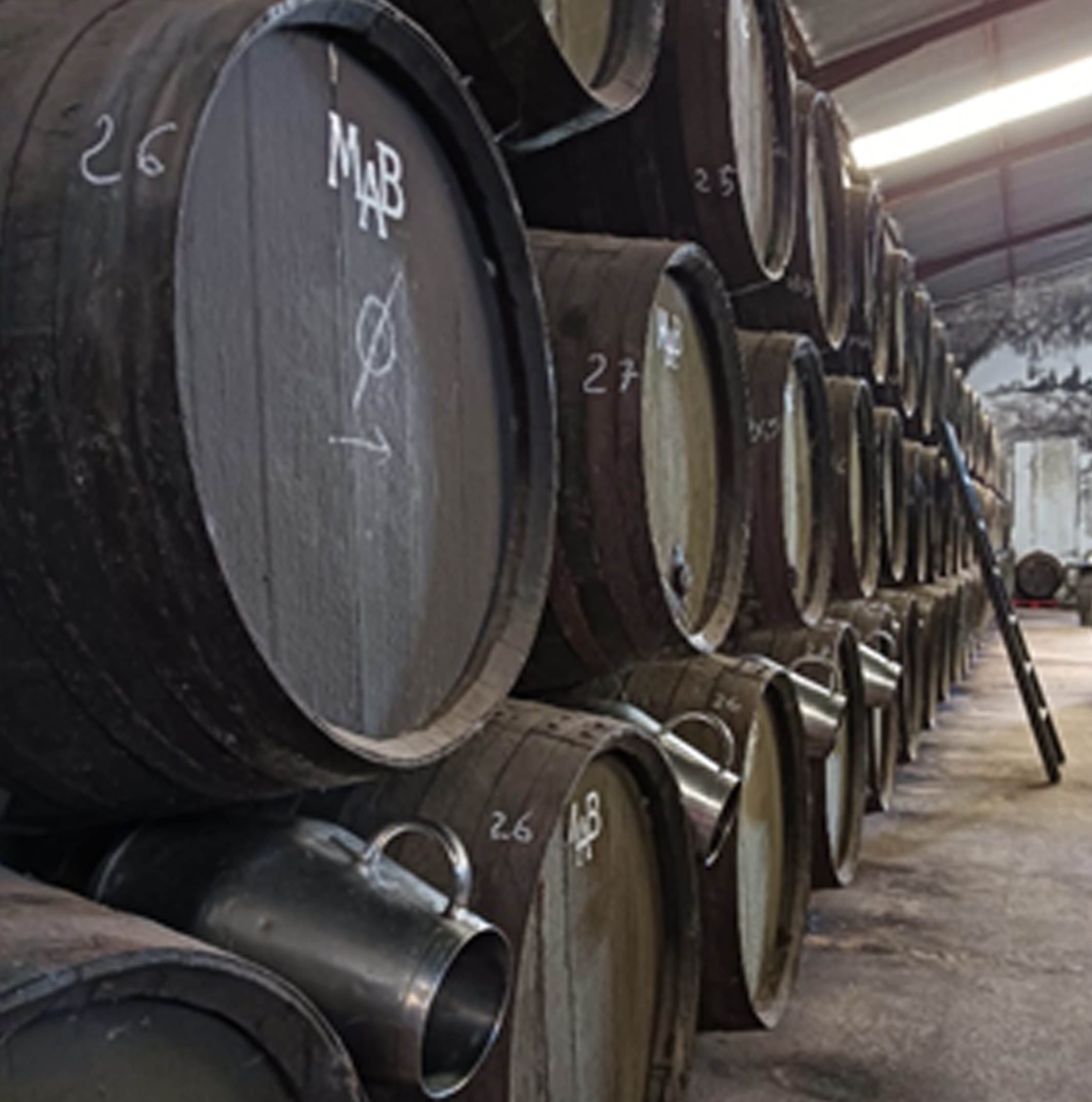
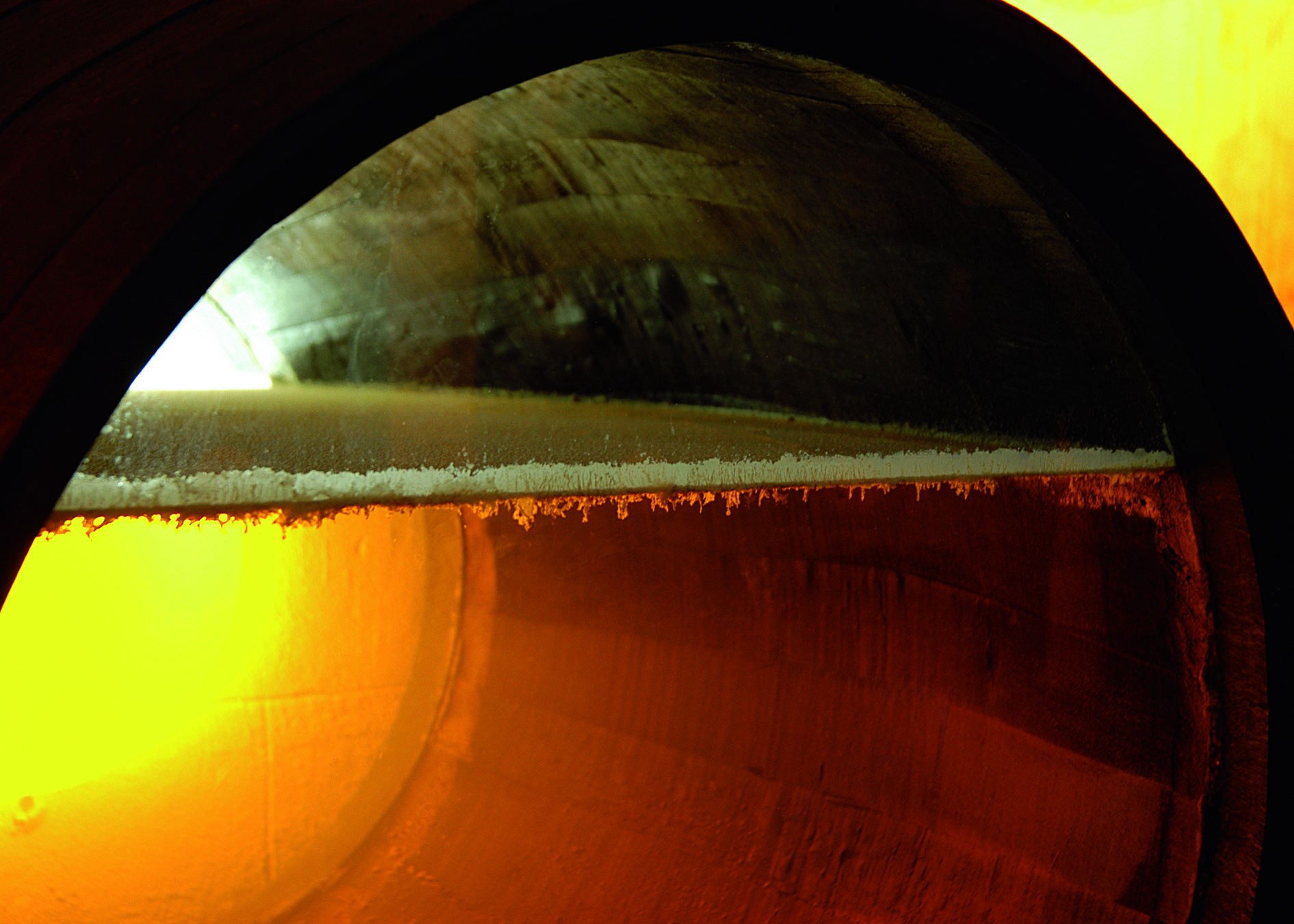
The fine wine from the Manuel Aragón Winery (Fino Granero) is topped up to 15º in order to favor the development of the Flor veil, a whitish layer of natural yeasts that is deposited on the surface of the wine, isolating it from the air of the wine. rest of the boot. In this biological aging process, the natural protection of the yeasts will prevent oxidation of the wine and give it very special organoleptic characteristics. The Fino Granero is produced in two modalities, the filtered one, the Traditional Fino Granero, and the Fino Granero en Rama, without filtering or clarifying, so the sensation when tasting it is the closest to drink wine directly from the winery's butt, with a greater intensity of flavor, smell and color.
The biological aging under the veil of flor lasts for a minimum period of three years and is carried out in American oak barrels.
The result of biological aging carried to its maximum expression for an average of 10 years, it is our new reference Fino Viejo Juntatabla, with a marked aroma of flower veil complemented by slight hints of noble wood , nuts or candy. Wine with a very complex nose located on the line that separates Finos from Amontillados.
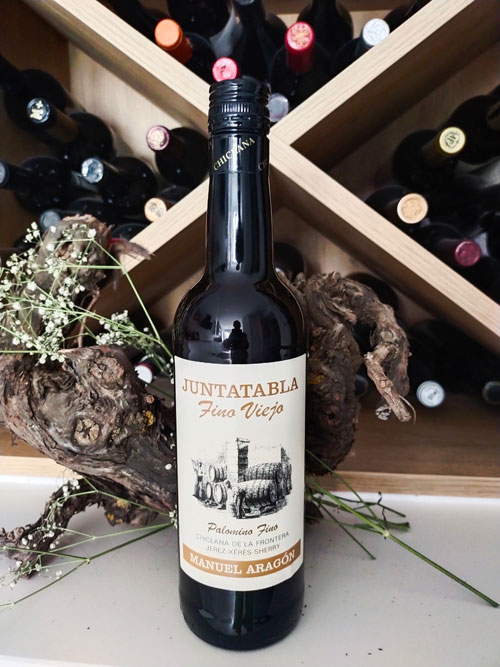
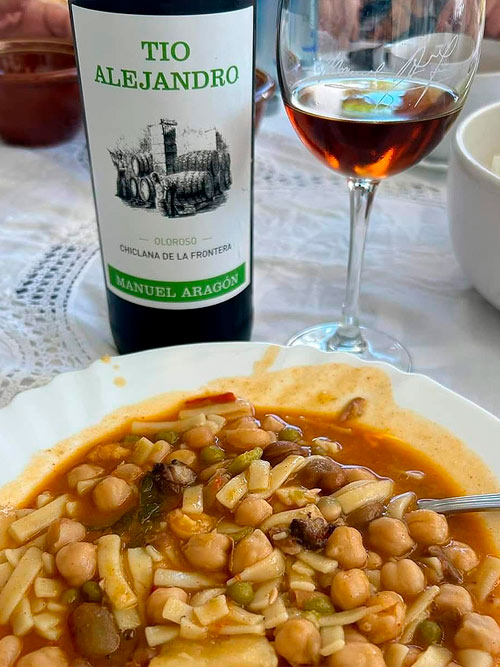
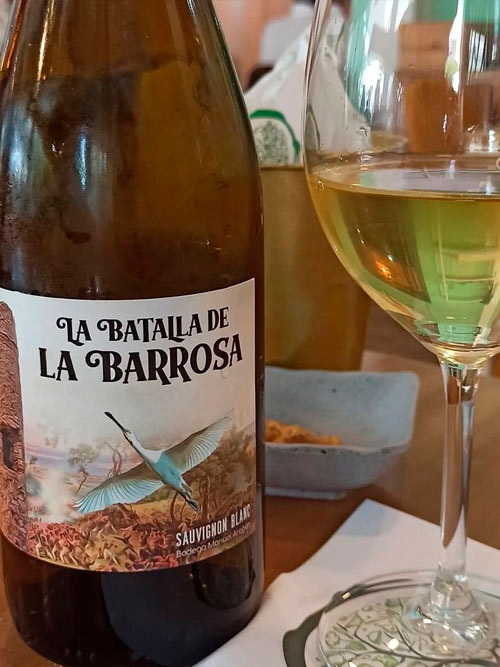
If the base wine is topped up to 17º, the veil of flor is not produced, with which the aging occurs in contact with the air, which favors the slow action of its oxygen. The aging produced in this way is called oxidative aging. Examples of wines with oxidative aging are Oloroso wines, such as Oloroso Tío Alejandro or the Oloroso Muy Viejo Manuel Aragón.
In wines made from Moscatel or Pedro Ximénez grapes (with grapes of said denomination), the fruit is overripe (on the vine or by exposure to the sun), which concentrates both the sugars and the natural acidity of the grapes. the grape. On the other hand, its fermentation is only partially carried out by adding alcohol in the process. It is the case of Moscatel Gloria, el Moscatel Los Cuatro, and the Pedro Ximénez Muy Viejo Manuel Aragón.
Some wines combine in their aging an initial process of biological aging and a subsequent process of oxidative aging, such as Amontillado El Neto o el Amontillado Muy Viejo Manuel Aragón.
In this sense, the Palo Cortado type wine is peculiar. When a wine is tasted in its initial phase and the winemaker considers that it must follow a biological aging process, the butt is marked with an inclined line, a “stick.” On the contrary, when the taster initially discovers in a wine a structure that recommends oxidative aging, he marks it with a circle. Sometimes a wine aged under a veil of flor later shows the taster specific characteristics that recommend oxidative aging. In that case, the alcohol level is raised to 17º and the “stick” is crossed with another. Thus we have a “palo Cortado” wine, like the Palo Cortado Muy Viejo Manuel Aragón, an extraordinary limited edition dry wine.
There are wines that are produced with a single grape variety, but others are obtained by mixing or blending various wines, for example, Oloroso with a part of Pedro Ximénez, such as Cream Arrumbaó, o el Hoyo Membrillo, two excellent wines with great character and a lot of body from Bodega Manuel Aragón.
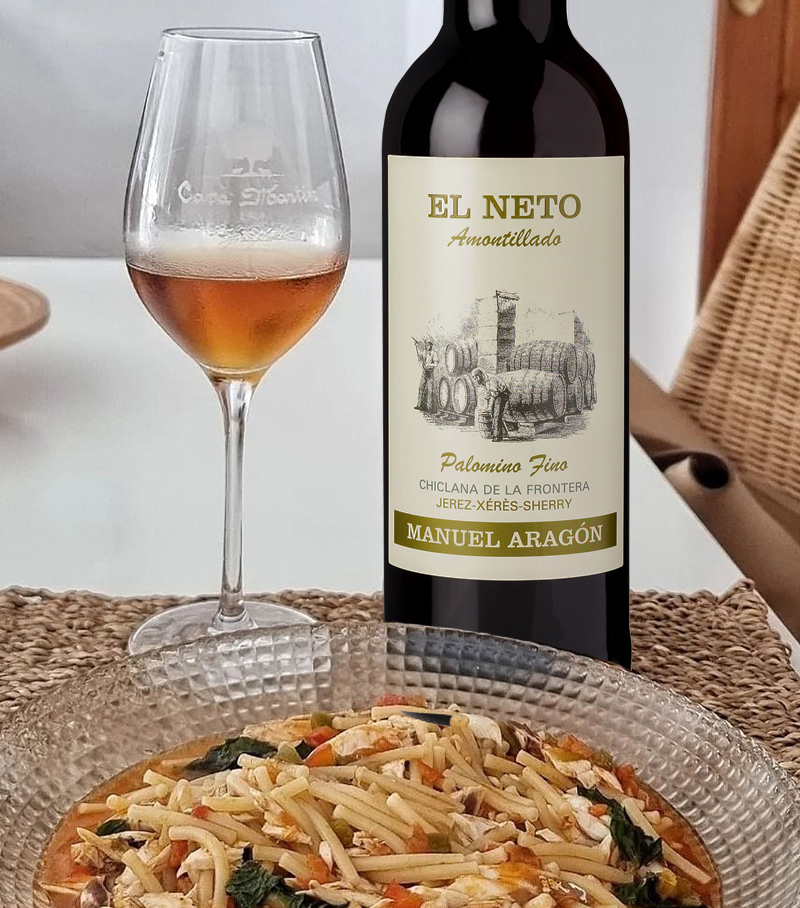
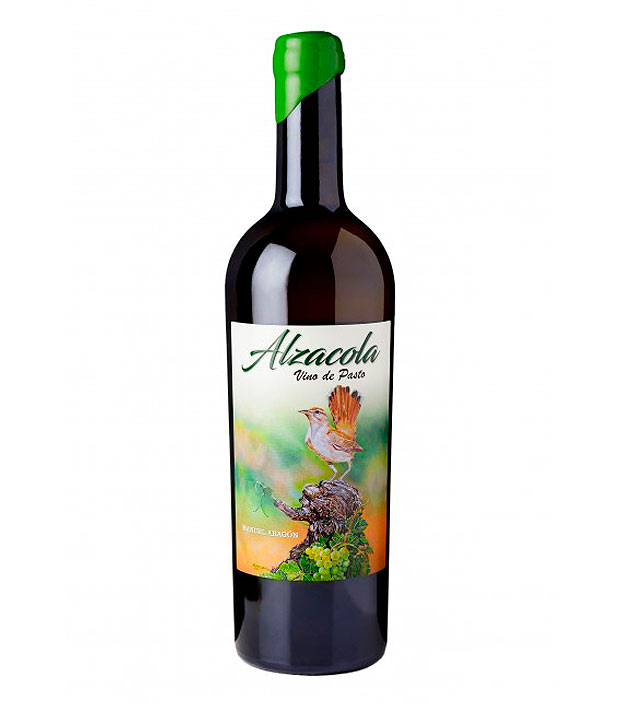
Varietal Wines
Varietal wines are those made from a single grape variety, and may include a different variety as a complement and always in a residual way. Our varietal wines are El Moscatel Gloria, made with grapes of the Moscatel de Alejandría variety and La Batalla de la Barrosa, white wine made 100% with the Sauvignon Blanc variety. The Manuel Aragón winery was the pioneer in Andalusia in making wines with this unique grape variety that is little used in our land.
Pasto Wines
Pasto Wines are wines of unquestionable quality, with a natural alcohol content without extra alcohol or aging in wood, where the clarity of their traceability from their origin to their final bottling is essential. Our Pasto Wines are the new reference for this 2024 Alzacola and the already traditional Retallo. Alzacola is made with dry-vinified Palomino Fino and Retallo grapes with Pedro Ximénez. Add photo (put the one attached in the email)
Criaderas and soleras
Sherry wines are aged using the traditional system of criaderas and soleras. The boots (500 liter capacity) are stacked at different levels. The lowest level is called solera because it is at ground level and these casks contain the oldest wines. The next row is the first criadera and the wine from its butts replaces the wine extracted from the solera for bottling. In turn, the wine from the first criadera is replaced with the even younger wine from the butts of the second criadera located above it. The result is exceptional wines that maintain the highest quality year after year.
The dynamic aging of Marco de Jerez wines allows for exceptionally long aging. In fact, some of our wines are among the oldest in the area, with ages well over 30 and 50 years.
